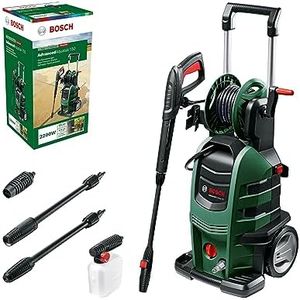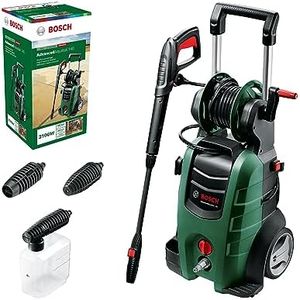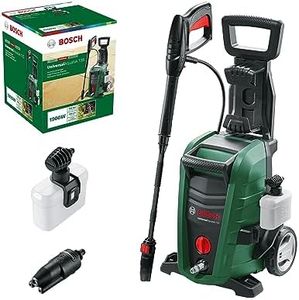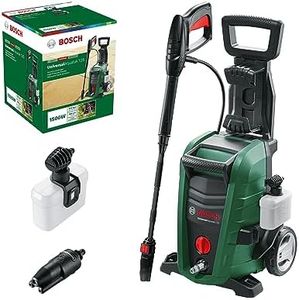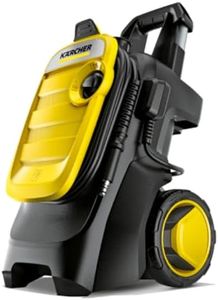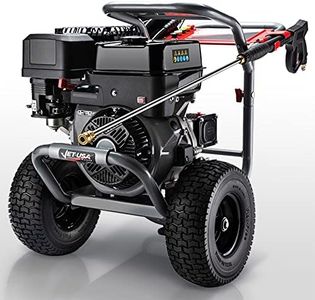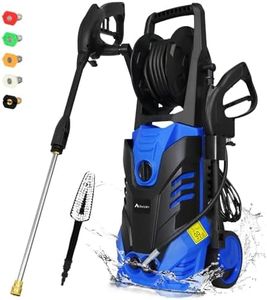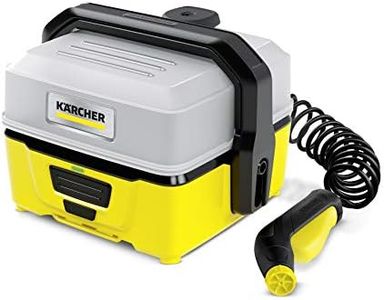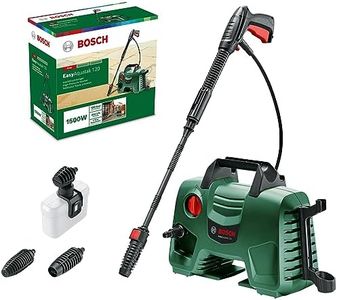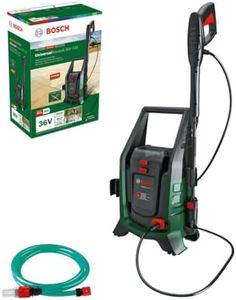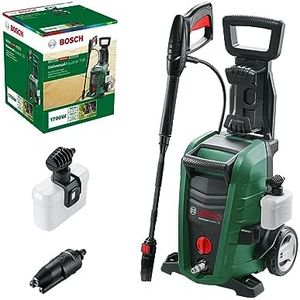We Use CookiesWe use cookies to enhance the security, performance,
functionality and for analytical and promotional activities. By continuing to browse this site you
are agreeing to our privacy policy
10 Best Pressure Washers
From leading brands and best sellers available on the web.Buying Guide for the Best Pressure Washers
When choosing a pressure washer, it’s important to think about what tasks you want to accomplish, how often you’ll use the machine, and where you’ll be using it. Pressure washers come in a range of sizes and power levels, each best suited for different kinds of cleaning jobs. Understanding the main features will help you select a washer that matches your cleaning needs without overdoing it or ending up frustrated by lack of power. Pay attention to the specifications—not just to get a strong machine, but to find one that's easy for you to handle and appropriate for your space.Pressure Output (PSI)Pressure output, measured in PSI (pounds per square inch), tells you how forceful the water stream will be. This is important because more PSI means more cleaning power, which is useful for tough jobs like stripping paint, while lower PSI is safer for washing cars and patios. Light-duty washers typically go up to 1800 PSI, which is good for small tasks like cleaning garden furniture. Medium-duty models range from 1800 to 2800 PSI and are versatile enough for most home cleaning projects. Heavy-duty washers, usually above 2800 PSI, are designed for the toughest jobs, such as cleaning large driveways or prepping surfaces for painting. Consider what you’ll be cleaning most often—if it’s just light surfaces, lower PSI is enough and easier on your stuff; if you need to tackle bigger, grimier jobs, go higher.
Water Flow Rate (GPM)Water flow rate, usually shown as GPM (gallons per minute), tells you how much water the washer uses per minute, which affects how fast you can clean large areas. Higher GPM means more water is coming out, helping to rinse away dirt faster. Light-duty cleaners often have a GPM around 1.2 to 1.5, medium ones around 1.5 to 2.5, and heavy-duty above 2.5. If you’re washing smaller surfaces, a lower GPM can do the job and waste less water. If you want to complete large surfaces quickly, a higher GPM will save you time. Match the GPM to the size of your regular cleaning projects.
Power SourcePressure washers are powered by either electricity or gasoline, and the choice affects usability and convenience. Electric models are quieter, lighter, and easier to maintain, making them ideal for most residential use, especially if you have close access to electrical outlets. Gas-powered models are more powerful and portable since they don't require a cord, but they’re heavier, noisier, need more maintenance, and are best for tackling bigger outdoor jobs or places far from outlets. To choose, think about where you’ll use the washer and how much power you need.
Portability and WeightThe weight and portability of a pressure washer determine how easy it is to move around and store. Lighter models are much easier for quick, casual cleaning and when you need to carry them between locations or up stairs. Heavier washers might have wheels to help move them, but they can still be tough to handle in tight spaces or for those with limited strength. If you expect to move your washer around a lot, consider a model that’s light and has a comfortable handle and wheels.
Nozzle TypesDifferent nozzles let you adjust the spray pattern and pressure for various tasks, which is key for safe and effective cleaning. Fine, narrow spray nozzles provide more pressure for tough spots, while wider sprays are gentler and clean bigger areas more quickly. Most washers come with several quick-connect nozzles or an adjustable nozzle. Think about whether you want simple switching between tasks—like washing a car then cleaning the pavement. More nozzle options offer more flexibility, especially if you’ll use your washer for different surfaces.
Detergent SystemMany pressure washers have a way to mix in or apply detergent, which helps clean especially dirty surfaces. Some machines have built-in soap tanks, while others use a siphon system to draw detergent from a bottle. If you plan to clean greasy or very dirty areas often, a good detergent system is important for making cleaning easier and more effective. For basic cleaning jobs, this feature may not be essential.
Hose LengthHose length tells you how far you can move from the machine while still using it. Short hoses (15-20 feet) might be more limiting and require moving the washer more often. Longer hoses (25-50 feet) provide more freedom to clean large vehicles or areas without moving the washer. Consider how much space you’ll need to cover in your cleaning routine and choose a hose length that lets you reach everywhere you need without frequent stops to reposition.
